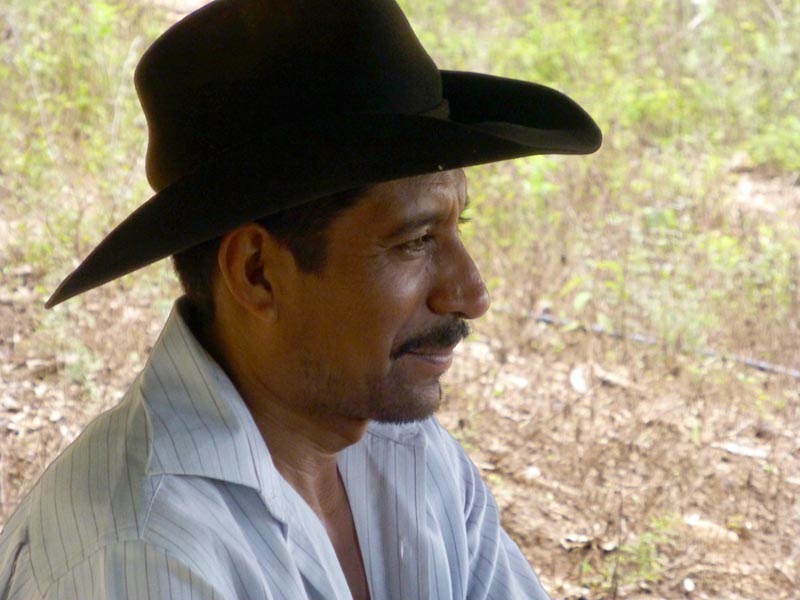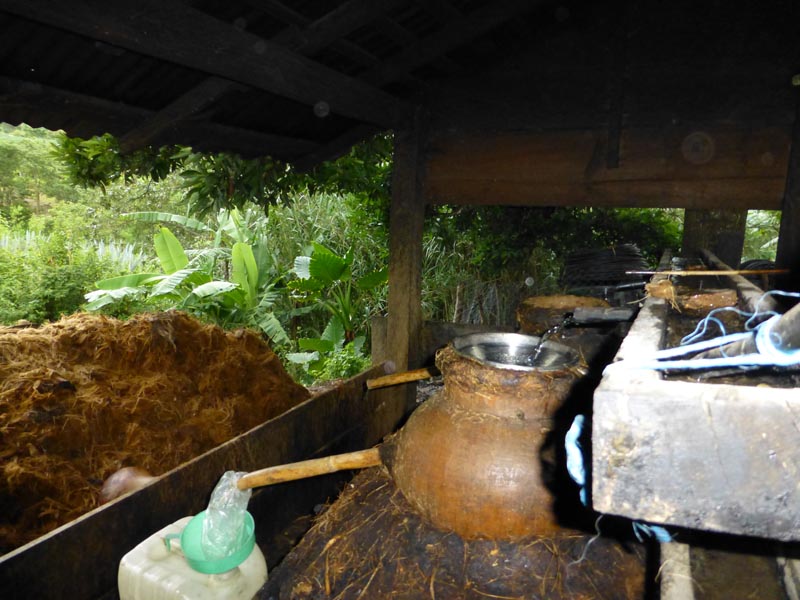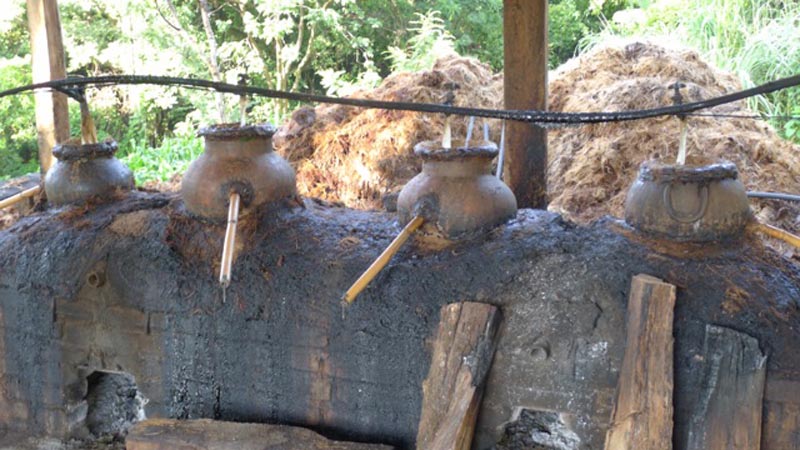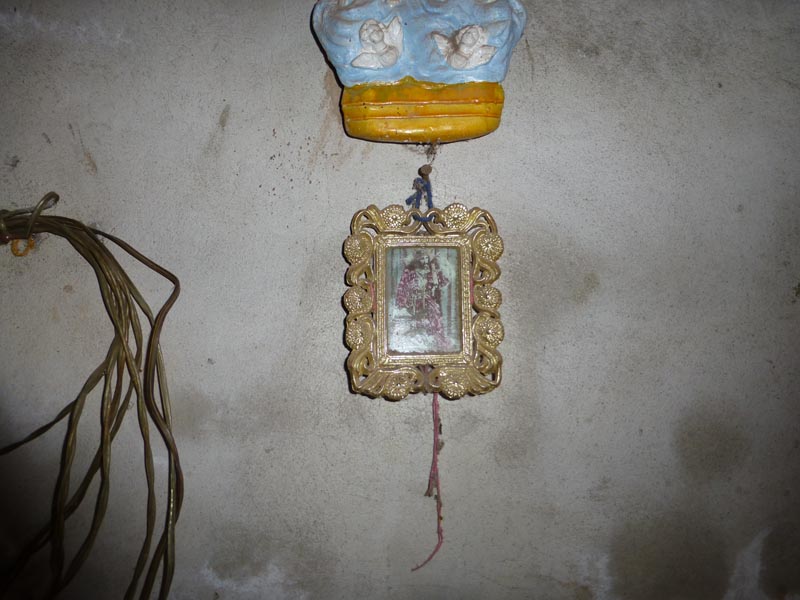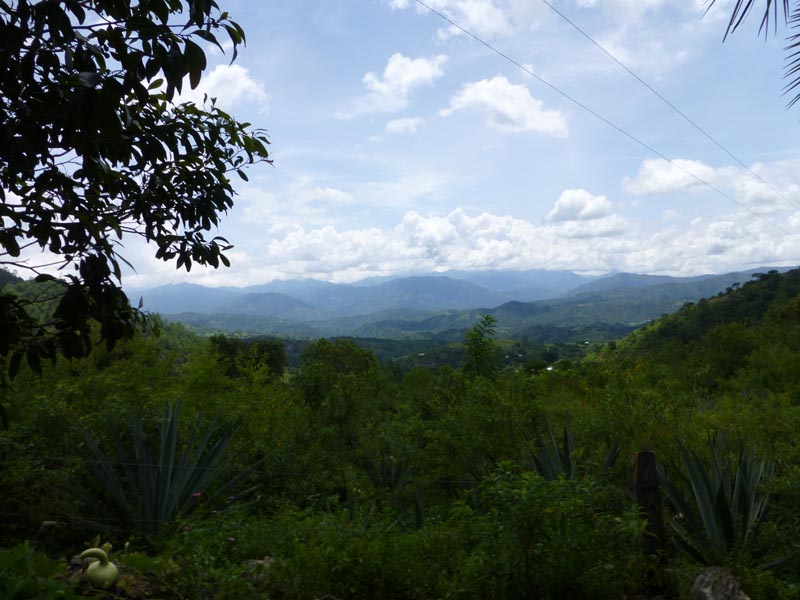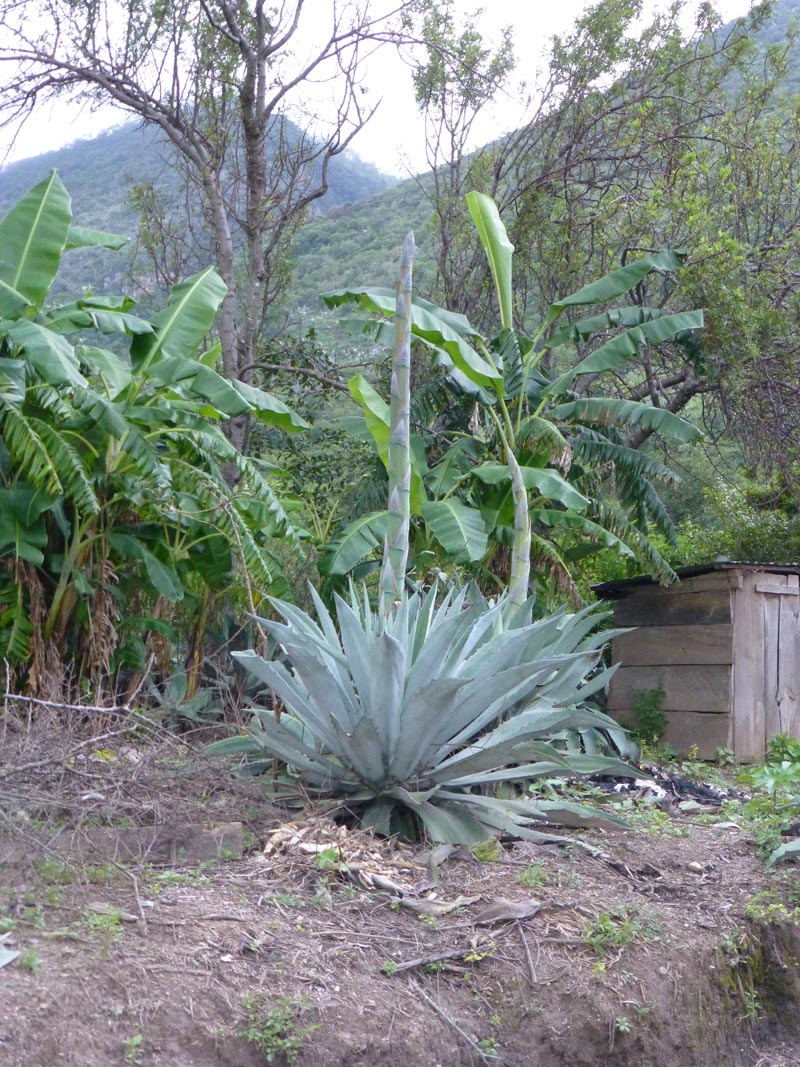ALIPÚS: Potrero
Potrero is at 3200 feet; the agaves are grown along the sides of a canyon rising steeply from the municipio. The soils are light-colored sandy shale. Fermentation is in small oak vats. The Potrero distillers crush by hand in oak canoas.
The old way of crushing roasted agaves: a canoa, hollowed out from a big log. It takes days. A local agronomist told me that yeasts prefer this non-uniform milling: a more complete and complex fermentation.
Clay potstills at Don Felix. The bottom chamber, the pot, is enclosed in adobe and stone above a wood-fired furnace chamber. A clay olla holds 50 liters, whereas the standard copper pot is 250-300 liters.
Above the olla is a second clay pot, the upper chamber of the still. You can see the holes for the bamboo tubes. Clay yields a distinctive soft mouthfeel, and smaller stills tend to yield well-defined flavors.
A clay still in operation in Potrero. In the mouth of the upper clay chamber is a metal pan, cooled by the water flowing from the trough at the right. Steam from the heated distilling material in the enclosed bottom pot rises into the upper chamber and condenses into drops on the cool bottom of the pan. The drops fall onto a collector inside the upper chamber, which funnels it out through the bamboo tube at bottom left.
The palenque of Jesus Rios has four clay pots, cooling water being supplied by valves in the overhead black hose. Note the oven furnace opening, below left.
Photographs by a tourist


